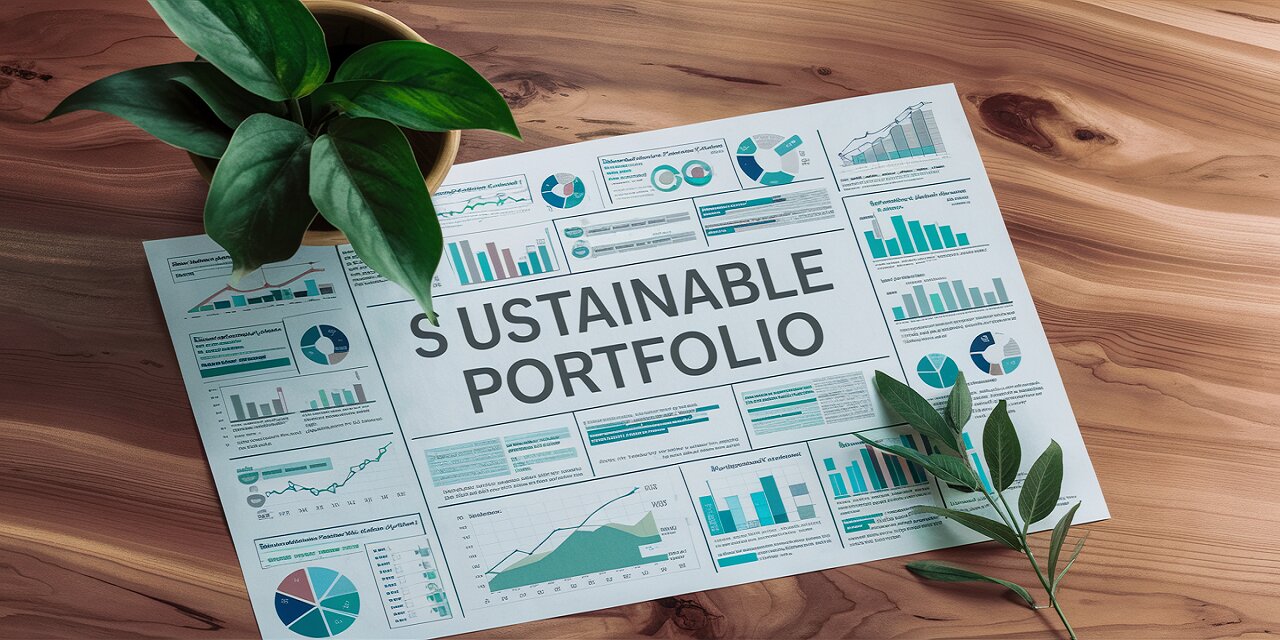
Sustainable Portfolio Blueprint
The world is changing and so is the way we invest. Today, investors are increasingly looking for ways to align their financial goals with their environmental and social values. This is where green investing comes in.
Green investing, also known as sustainable investing or ESG (Environmental, Social and Governance) investing, takes a holistic approach, considering not just the financial performance of a company, but also its impact on the environment, society and its own governance practices.
This guide offers a comprehensive introduction to green investing, empowering you to build a sustainable portfolio that reflects your values while aiming for long-term financial success.
Why Choose Green Investing?
There are several compelling reasons to consider green investing.
- Align Your Values with Your Investments: Green investing allows you to put your money behind companies that are actively working towards a sustainable future. Whether you’re passionate about clean energy, social justice or ethical labor practices, green investing allows you to support causes you care about.
- Long-Term Growth Potential: Many experts believe that sustainable companies are better positioned for long-term growth. By focusing on environmental and social responsibility, these companies are mitigating risks and preparing for a future where sustainability is paramount.
- Portfolio Diversification: Green investments can offer diversification benefits, potentially reducing overall portfolio risk. By incorporating a mix of traditional and green investments, you can create a more balanced and resilient portfolio.
- Positive Impact: Green investing allows you to contribute to a positive global impact. Your investments can support companies developing renewable energy solutions, promoting fair treatment of workers and fostering a more sustainable future.
Demystifying ESG: The Core Principles of Green Investing
ESG investing focuses on three key factors when evaluating potential investments.
- Environmental: This considers a company’s impact on the environment. Key factors include greenhouse gas emissions, resource management, pollution control and climate change mitigation strategies.
- Social: This looks at a company’s relationship with its employees, stakeholders and the broader community. Areas of focus include labor practices, diversity and inclusion, community engagement and human rights considerations.
- Governance: This assesses a company’s internal practices and leadership. It considers factors like board composition, executive compensation, risk management strategies and transparency in reporting.
By analyzing these factors alongside traditional financial metrics, investors can gain a more complete picture of a company’s potential risks and opportunities in a sustainable future.
Building Your Green Portfolio: A Step-by-Step Guide
Ready to take the plunge into green investing? Here’s a roadmap to guide you.
- Define Your Values: The first step is to identify the environmental and social issues that matter most to you. Do you prioritize clean energy? Fair labor practices? Gender equality? Once you have a clear understanding of your values, you can begin researching companies and investment options that align with them.
- Set Your Investment Goals: Green investing should be considered within your overall financial goals. Are you saving for retirement? A child’s education? Determine your risk tolerance and investment timeline. Green investments can range from lower-risk options to higher-risk but potentially high-reward ventures. Align your green investments with your overall financial objectives.
- Research Green Investment Options: Numerous green investment options are available. Here are some of the most common:
- Sustainable Funds: These mutual funds or ETFs (Exchange Traded Funds) invest in companies that meet specific ESG criteria. They offer a diversified way to participate in the green market.
- Green Bonds: These bonds finance projects with positive environmental or social outcomes, such as renewable energy development or sustainable infrastructure.
- Individual Green Stocks: Conduct thorough research to identify individual companies with strong ESG practices and promising financial outlooks.
- Talk to a Financial Advisor: If you’re new to investing, consider seeking guidance from a financial advisor who specializes in sustainable investing. They can help you create a personalized green investing strategy tailored to your goals and risk tolerance.
- Start Small and Diversify: Don’t feel pressured to overhaul your entire portfolio at once. Begin by incorporating a portion of your portfolio into green investments. As you gain comfort and knowledge, you can gradually increase your green investment allocation. Diversification is key, so balance your green investments with traditional asset classes to manage overall portfolio risk.
Beyond the Basics: Considerations for Advanced Green Investors
While the core principles outlined above provide a solid foundation, experienced investors may want to delve deeper. Here are some additional factors to consider.
- Impact Investing: This goes beyond ESG by actively seeking investments that directly contribute to positive social and environmental change. Impact investments might target specific areas like clean water access, affordable housing or sustainable agriculture.
- Greenwashing: Beware of companies that portray themselves as environmentally or socially conscious without actual action behind those claims. Conduct thorough research and rely on reputable ESG rating agencies to assess a company’s true commitment to sustainability.
- Active vs. Passive Management: Choose between actively managed green funds where portfolio managers select individual investments or passively managed options like ESG ETFs that track a specific sustainability index.
- Performance Measurement: Evaluate the performance of your green investments not just through traditional financial metrics, but also by considering their environmental and social impact. Many resources track these factors alongside financial returns.
Additional Resources and Tips for Success
As you embark on your green investing journey, here are some helpful resources.
- Sustainable Investment Forum (US SIF): https://www.ussif.org/
- Global Sustainable Investment Alliance (GSIA): https://www.gsi-alliance.org/
- Morningstar Sustainability Rating: https://www.morningstar.com/sustainable-investing/morningstar-sustainability-rating-explained
Tips for Success
- Stay Informed: The world of green investing is constantly evolving. Regularly seek out new information and updates on sustainability trends and green investment opportunities.
- Be Patient: Green investing isn’t a get-rich-quick scheme. Focus on long-term goals and be patient as your sustainable portfolio grows.
- Engage with Your Investments: Don’t be a passive investor. Use your shareholder voice to advocate for sustainable practices within the companies you invest in.
By following these steps and continuing your education, you can build a sustainable portfolio that reflects your values and contributes to a greener future. Remember, green investing is about aligning your financial goals with your vision for a better world. As you invest for your future, you’re also investing in the planet’s future.














